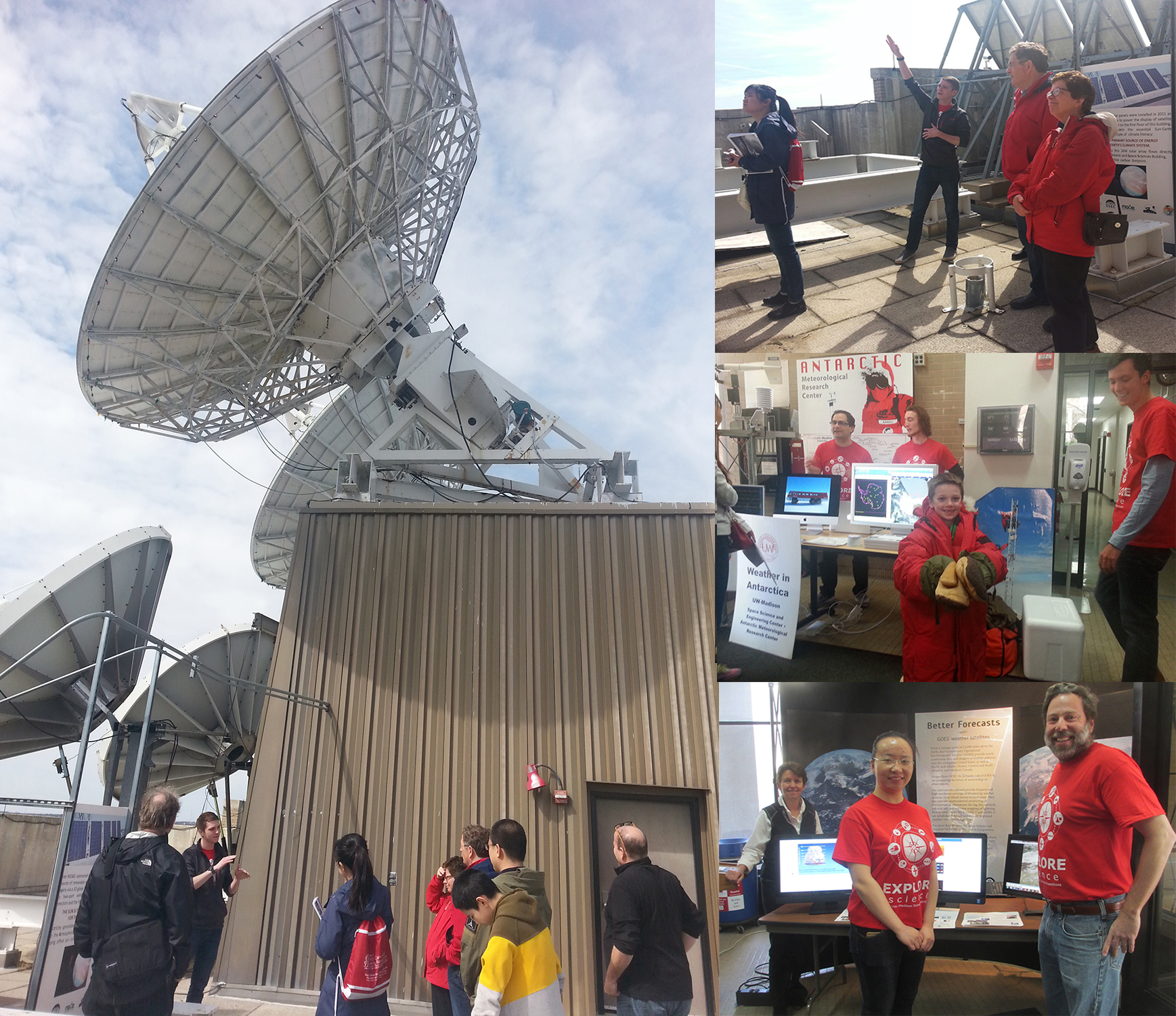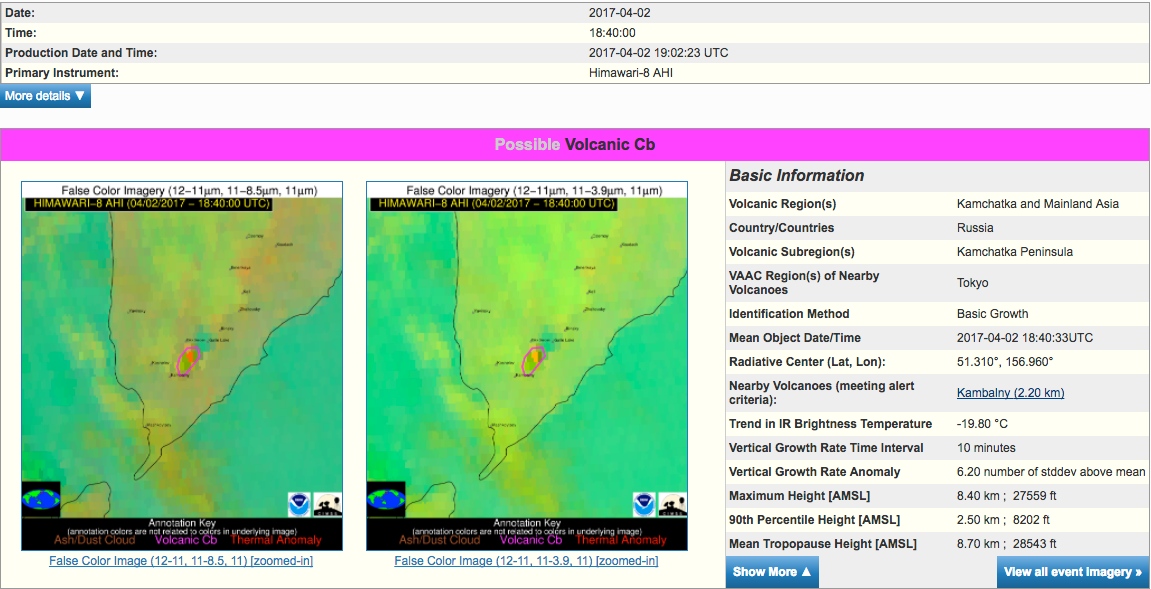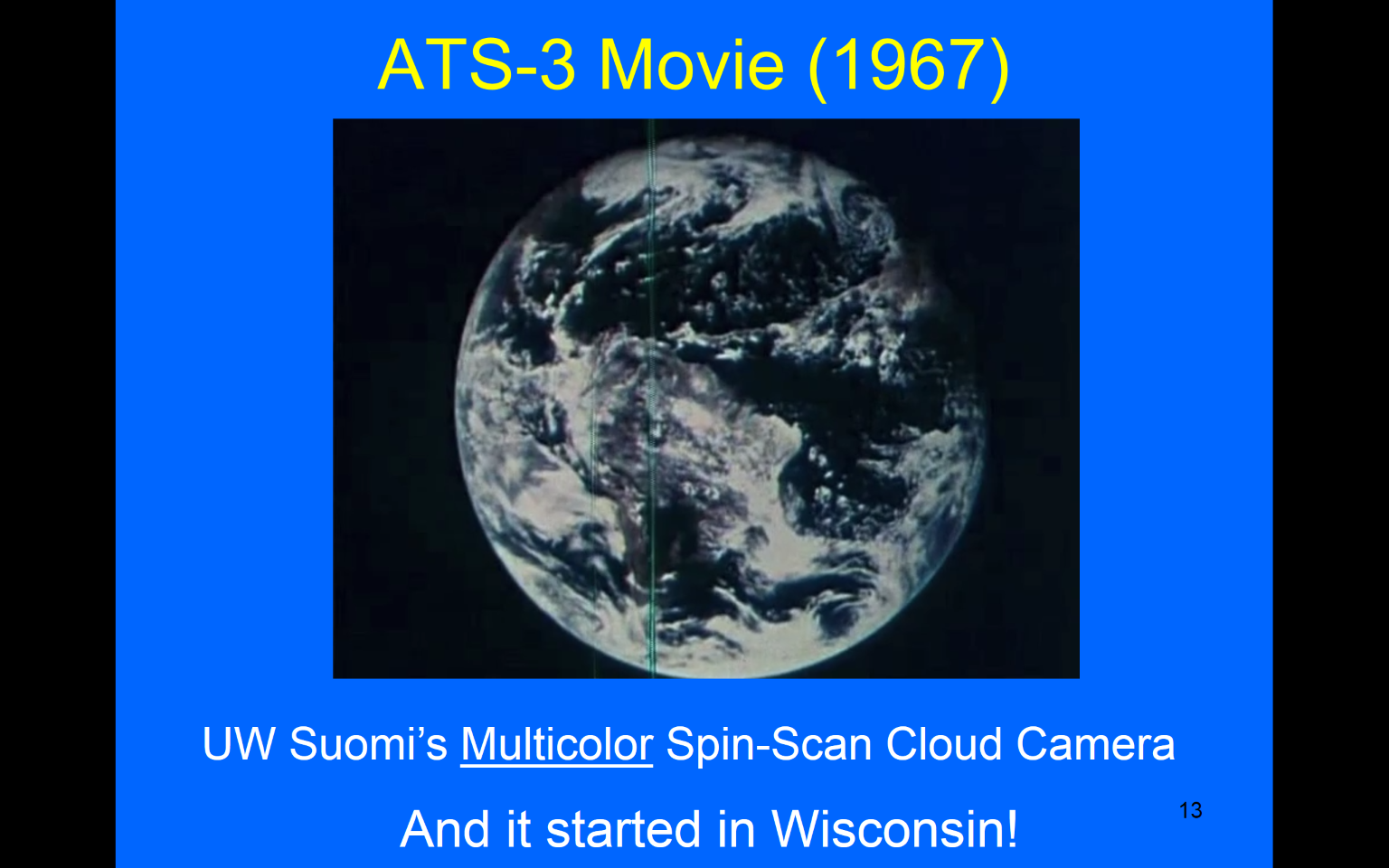
[ Archive ]

 |
CIMSS-NOAA Weekly Report [ Archive ] |
 |
ASPB AND CIMSS WEEKLY HIGHLIGHTS FOR THE WEEK ENDING APRIL 7, 2017
IN THE PRESS:
ITEMS FOR THE ADMINISTRATOR:
ITEMS FOR THE ASSISTANT ADMINISTRATOR:
ITEMS FOR THE OFFICE DIRECTOR, STAR:
April 1st Open House at the Birthplace of Satellite Meteorology: Nearly two dozen scientists, communication specialists and college students helped staff an open house at the University of Wisconsin-Madison (UW) Atmospheric, Oceanic & Space Science (AOSS) building on April 1, 2017 to over 400 visitors. Among the experts on hand was NOAA’s Tim Schmit promoting rapid scan data from the next-generation Geostationary Operational Environmental Satellite (GOES)-16. Among the visitors was former Secretary of Commerce and current UW Chancellor Becky Blank. Science, satellites and sunshine was enjoyed by all. (M. Mooney, CIMSS, (608) 265-2123)
 (Click image to enlarge)
(Click image to enlarge)
Figure caption: Scenes from the CIMSS/SSEC Open House.
ITEMS FOR THE DIVISION CHIEF, CoRP:
First Place in High School Science Fair: Kate DeMarsh and Madison Bohling of Nederland High School in Colorado won the regional Science Fair with their paper entitled "Cape Verde Hurricanes: How genesis point impacts landfall latitude", and will now compete at the Colorado State Science Fair. Jim Kossin (NCEI/CWC) provided data and code for their project after the students wrote to him for assistance. (J. Kossin, NCEI/CWC, 608-265-5356)
Climate Change talk to Master Gardeners: Margaret Mooney from the Cooperative Institute for Meteorological Satellite Studies (CIMSS) was invited to present on "Gardening in a Changing Climate" at the 9th annual Master Gardener Association meeting in Rio, Wisconsin on Saturday April 1, 2017. Twenty-five gardeners attended the 45-minute presentation to learn about weather, climate and weather satellites, including the promise of NOAA's next generation Geostationary Operational Environmental Satellite (GOES)-16. (M. Mooney, CIMSS, (608) 265-2123)
Lake Michigan Ozone Study Brief to Sheboygan County Chamber: Brad Pierce gave a briefing on the 2017 Lake Michigan Ozone Study (LMOS2017) to the Business Advocacy Committee of the Sheboygan County Chamber of Commerce in Sheboygan, WI on April 7, 2017. The briefing discussed the objectives and measurement strategy used to characterize the recirculation, aging, and mixing of the Chicago and Milwaukee urban plumes as they move over Lake Michigan and their impact on surface ozone along the shore of Lake Michigan. (R.B. Pierce, E/RA2, 608-890-1892, brad.pierce@ssec.wisc.edu)
NOAA/NESDIS/STAR Volcanic Eruption Alert Triggers Advisory: An automated volcanic eruption alert from the NOAA/NESDIS/STAR VOLcanic Cloud Analysis Toolkit (VOLCAT) alerted forecasters to an explosive volcanic eruption on the Kamchatka Peninsula of Russia on April 2, 2017. A volcanic ash advisory to aviation was subsequently issued in advance of the cloud dispersing into busy airspace (volcanic ash is a major aviation hazard). VOLCAT, which was developed in collaboration with the Cooperative Institute for Meteorological Satellite Studies (CIMSS), is uniquely capable of automatically detecting volcanic eruptions in a timely manner through advanced use of low earth orbit and geostationary meteorological satellites. VOLCAT is an enterprise information system, in that the aim is to transform large volumes of satellite and non-satellite data into actionable information. Such an approach is needed to improve aviation safety and efficiency in the wake of volcanic eruptions, which are a daily occurrence. VOLCAT products are currently generated at the University of Wisconsin. Transitioning “big data” approaches, such as VOLCAT, into operations is an ongoing challenge. (M. Pavolonis, E/RA2, 608-263-9597, Mike.Pavolonis@noaa.gov)
 (Click image to enlarge)
(Click image to enlarge)
Figure caption: A volcanic eruption alert report is shown for the eruption of Kambalny (southern Kamchatka Peninsula of Russia) on April 2, 2017. The NOAA/NESDIS/STAR VOLcanic Cloud Analysis Toolkit (VOLCAT) automatically generates the alert report when a likely volcanic eruption is detected using sophisticated multi-sensor algorithms. Users receive a hyperlink to the alert report either via email or text message. A volcanic ash advisory was issued as a direct result of this alert.
Public Talk on Geostationary Satellites: On April 5, 2017, T. Schmit gave a talk at the Wednesday Night at the Lab series on the University of Wisconsin-Madison campus. The title was “Wisconsin’s Role in Geostationary Weather Satellites” and covered the past, present and future of remote sensing from the geostationary orbit. The presentation can be watched at http://www.biotech.wisc.edu/webcams?lecture=20170405_1900. (T. Schmit, E/RA2, 608-263-0291)
 (Click image to enlarge)
(Click image to enlarge)
Figure caption: A slide from the presentation of a loop of true color imagery from NASA’s ATS (Applications Technology Satellite)-3, launched in 1967.
VISITORS:
NEXT WEEK:
LOOKING AHEAD:
| Archived Weeklies Page | Submit a report item |